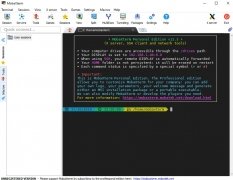


Windows 2000/ NT/ XP/ 2003/ Vista/ 7/ 8/ 8.Both solutions posted above (by & actually work but there may be need for extra work, so here are a few additions.ġ.You're connecting to a host (destination server) that is running SSH (daemon) but doesn't have any session timeout configurations set for connecting SSH clients.Ģ.

You're connecting to a host that already has SSH client timeout configuration set but the set value (on the remote host) is either higher than, or equal to the "keepalive" value you have set on your SSH client (like MobaXterm, Putty etc). To find out if there are any configs set on the destination server's SSH configurations, use the command below (as root, or a user with sudo privileges): $ cat /etc/ssh/sshd_config | grep "ClientAlive" If the destination server's "SSH keepalive configurations for the clients" are set, they override your remote client SSH keepalive configurations, hence controlling the session timeouts. The command above works on multiple Linux and Solaris flavours. If you don't have admin access to the destination server, your Systems administrator may be managing your session timeouts irrespective of the "keepalive" parameters you set on your SSH client before connecting. Lastly, if you are using VPN software, or connecting to a demilitarized zone (DMZ), sometimes the session timeouts are controlled at that level (firewall level), so involve your Network administrator.īottom line, love your administrators.


 0 kommentar(er)
0 kommentar(er)
